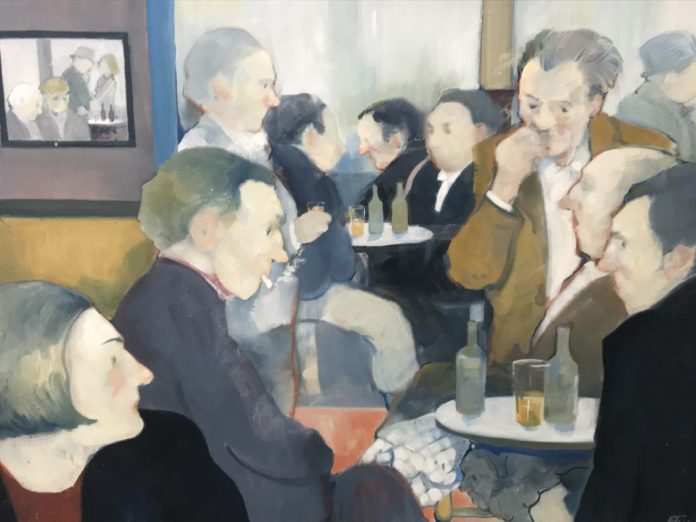Many headlines have appeared since a new exhibition opened at Warrington Art Gallery and Museum heralding the discovery of a new Lowry in the paintings and drawings of Eric Tucker.
For those not acquainted with the story Eric, who died in 2018 painted literally hundreds of paintings in the front parlour of his terraced house in Warrington over six decades.
Not even his family were aware of the prolific nature of the man whose work depicting the streets and pubs of north-west England, hence the comparison to Lowry.
A exhibition of his works in his former put on over a weekend attracted queues of people around the block and now the general public have a chance for the next couple of months to view his work at the Warrington Museum of his home town
Born 1932, He left school at 14 and was apprenticed as a sign writer – a role he never took up. In his youth he fought as an amateur and, briefly, a professional boxer. Following National Service and time spent working on the great steel works at Llanwern in South Wales he returned to Warrington, finding work as a casual building labourer. He never married or had children, and lived the rest of his life in the council house he shared with his mother and stepfather.
He had two enduring pursuits in life – gambling on the horses, and painting. The latter was his great love. In the front room of his mother’s house he produced work over more than 60 years, painting whenever his working life allowed
The results are stunning.His characters are not the matchstick men of Lowry observed by the shy Salfordian but the impressions of a man deeply embedded in the community, the faces and the shapes based on the people he mixed with.
His association with Manchester saw him drinking in the now long demolished bars Bobby Liston’s bat Tommy Ducks and the sawdust strune original Yates’ on Market Street as well as the Manchester Shebeen’s the illegal drinking clubs inside terraced houses in Mossside
Aside from those he painted the street scenes of Warrington the daily dramas of the working class, Tucker was a committed socialist, and even as the landscape changed, the characters kept their original working class clothes.
He met Lowry once as he often toured the galleries of Manchester but it is said his real inspiration was the Edward Burra who painted the City scenes of New York, Paris and Marseille during the 1930’s capturing the marginalised characters on the then fringes of society
Eric took his lead from Burra, bringing those characters to life in conversation, drinking,playing cards or singing around the piano
He had other obsessions, clowns from his childhood, and landscapes
During his lifetime he almost entirely refused to exhibit or sell his work – but in his final year he expressed a wish for it to be seen. Cataloguing the work after his death in Summer 2018, his family found more than 400 paintings, stacked up in every room of his house, in cupboards and wardrobes – and thousands of drawings, stuffed in drawers and old suitcases.
The exhibitions runs at Warrington Museum until February 23rd







